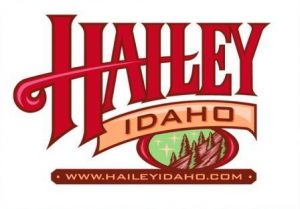New & proposed ordinances are impacting Valley business owners
By Hayden Seder
From Sun Valley to Bellevue, the details of what business owners can and can’t do to storefront signage can vary. Something that’s consistent? The dilemma cities face—especially in a resort area—in trying to balance what looks pretty and what helps businesses promote their goods and services.
What follows is a series of briefs on Valley cities’ recent handlings of issues involving commercial signage.
Sun Valley
 The City of Sun Valley recently amended its sign regulations, specifically addressing for-sale signs and political signs. Over the years, depending on where the signage was located, gray areas would emerge where it wasn’t clear if permitting was required.
The City of Sun Valley recently amended its sign regulations, specifically addressing for-sale signs and political signs. Over the years, depending on where the signage was located, gray areas would emerge where it wasn’t clear if permitting was required.
Enter Ordinance 536. According to Sun Valley Community Development Director Bryce Ternet, the new ordinance will clearly define that “for sale” and “political” signs on private property will be exempt from requiring a sign permit from the city. It will also increase the maximum size for these signs to be consistent with current practices for real estate signage.
The proposed changes to sign regulations were reviewed by the city’s planning and zoning commission at a January 2019 meeting where the commission unanimously recommended approval of the changes. The City Council reviewed and unanimously approved the proposed ordinance at their April 4 meeting.
The amendment also specified that certain signs are exempt from requiring an approved sign permit from the community development director and the planning and zoning commission, including:
- Signs in a public right of way by a public agency controlling or directing traffic
- Banners hung across public rights of way which comply with applicable city ordinances
- Governmental and/or utility warning signs
- Temporary holiday decorations, flags, windsocks
- Any sign inside a building not visible from the exterior of the building
- Signs in or upon a vehicle
- H-frame signs on private property (commonly used for real estate signs and political signs)
- L-stake signs commonly used for real estate sales
Ketchum
 Although the City of Ketchum has not made any recent changes to its sign regulations, officials are letting business owners know what they say works and doesn’t work for the city.
Although the City of Ketchum has not made any recent changes to its sign regulations, officials are letting business owners know what they say works and doesn’t work for the city.
Maureen Puddicombe, planning technician for the City of Ketchum, said officials have been trying to encourage retailers to use blade signs—a type of projecting sign mounted on a building façade or storefront pole—for their business, as it is more pedestrian friendly.
“As for future plans, we would like to discourage flag signs, multiple signs and lighted signs,” Puddicombe said.
No specific proposals have been presented yet.
Hailey
 The City of Hailey recently considered proposing sign ordinance changes, but The Chamber – Hailey & The Wood River Valley asked the city to let an advisory group offer business-friendly suggestions before any specific proposals were written by staff. City officials obliged.
The City of Hailey recently considered proposing sign ordinance changes, but The Chamber – Hailey & The Wood River Valley asked the city to let an advisory group offer business-friendly suggestions before any specific proposals were written by staff. City officials obliged.
“We want to make sure voices in the business community are heard,” said Mike McKenna, executive director of The Chamber. “It’s nice to see our leaders are listening.”
McKenna said the main signage concerns are that with new restrictions on materials and lighting, costs are likely to increase, which is hard on small businesses. Large national franchises, he said, could be impacted, too, because restrictions on digital signs and other rules could go against brand guidelines for some companies.
The next sign meeting won’t take place until June, so The Chamber is still putting its advisory group together.
Bellevue
 In Bellevue, signage issues triggered the question of what is art and what is advertising. Last summer, Pete Prekeges—owner of the Silver Dollar Saloon—gave full artistic license to a local artist to mural the outside of his building. Prekeges left town on vacation and came back to a widely popular piece of art depicting the Sawtooths, trout, morels and more. The more? The words “Silver Dollar Saloon” in the middle of the mural that turned the painting from a work of art into commercial signage, at least in terms of city code.
In Bellevue, signage issues triggered the question of what is art and what is advertising. Last summer, Pete Prekeges—owner of the Silver Dollar Saloon—gave full artistic license to a local artist to mural the outside of his building. Prekeges left town on vacation and came back to a widely popular piece of art depicting the Sawtooths, trout, morels and more. The more? The words “Silver Dollar Saloon” in the middle of the mural that turned the painting from a work of art into commercial signage, at least in terms of city code.
The situation did not result in any changes to code, but the city did ask Prekeges and the artist to address the matter at a city council meeting.
“Did the mention of the Silver Dollar make it an advertisement? Sure. But it’s also a cool piece of art,” said Mayor Ned Burns, who was a councilmember at that time.
Essentially, the city wanted to make sure other businesses would go through the proper permitting channels if using their name in a piece of art, or simply refrain from using a business name in any new mural so the work would not violate signage laws, the mayor explained.
“I think our ordinance is working for now,” Burns said.


